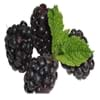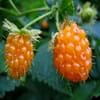Health Benefits
Cancer prevention, Heart care, Increases metabolic rate, Strengthening of bones, Treatment of skin Diseases
Cancer prevention, Heart care, Reduces nervous tension, Reduces blood circulation problems, Reduces stress, Regulation of heart rate, Strengthening of bones
General Benefits
Anti oxidant properties, Boosts immune system, Digestive aid, Eye care, Improves blood circulation, Sore throat treatment
Anti-inflammatory properties, Controls blood pressure, Digestive aid, Eye care, Helps in weight loss, Improves eye vision, Maintains healthy cholesterol level, Strengthens bones
Skin Benefits
Anti-aging benefits, Reduces wrinkles, Skin rejuvenation, Treatment of skin diseases
Anti-aging benefits, Reduces wrinkles, Treatment of dark spots, Treatment of skin diseases
Hair Benefits
Protects hair
Protects hair
Allergy Symptoms
Abdominal pains, Coughing, Diarrhea, Itching, Runny nose, Sneezing, Swelling of mouth, tongue or lips, Wheezing
Diarrhea, Itching of mouth, Nasal congestion, Sneezing, Swelling of face, Watery eyes
Side Effects
Allergic reaction
Allergic reaction
Best Time to Eat
Best if taken as a breakfast (or empty stomach), As a snack in the late afternoon, Don't consume at night and before bed, Eat the fresh ones, avoid mixing with any other foods, don't eat after meal., Morning time (before lunch)
Along with meal, As a snack in the late afternoon, Don't consume at night and before bed, Morning time (before lunch)
Vitamin A (Retinol)
Not Available
Vitamin B6 (Pyridoxin)
Not Available
Vitamin B9 (Folic acid)
Not Available
Vitamin C (Ascorbic Acid)
Not Available
Phytosterol
Not Available
Calories in Fresh Fruit with Peel
Calories in Fresh Fruit without Peel
Not Available
Not Available
Calories in Frozen Form
Not Available
Not Available
Calories in Dried Form
Not Available
Not Available
Calories in Canned Form
Not Available
Calories in Juice
Not Available
Calories in Jam
Not Available
Calories in Pie
Not Available
Type
Berry
Tree fruit, Tropical
Varieties
Dwarf Huckleberry, Cascade Huckleberry, Mountain huckleberry and Blackwinter Huckleberry
Ahdar, Ahmar, Asfar, Blush, Champagne, Early Red, Eulalia, Fire Ball, Golden Red, Golden Yellow, Oliver, Thales, Thames Pride, Victor and Wolfe
Color
Blue, Purple, Purplish black
Orange, Yellow
Inside Color
Purple
Orange
Origin
North America
China
Grows on
Not Available
Trees
Soil Type
Loamy, Sandy, Well-drained
Clay, Loam, Sand, Well-drained
Climatic Conditions
Humid, Warm
Warm to hot climate
Facts about
- "I'm your huckleberry" is a way of saying that one is just the right person for a given job.
- The phrase "a huckleberry over my persimmon" was used to mean "a bit beyond my abilities".
- Loquats are used in plum wine manufacturing.
- Dried leaves of loquat are used to make herbal tea.
- The seeds of loquat are slightly toxic & the symptoms of intoxication are nausea, vomiting & shortness of breath.
Top Producer
United States of America
Japan
Other Countries
Canada
Brazil, Chile, China, Egypt, Israel, Italy, Morocco, Pakistan, Portugal, Spain, Turkey
Top Importer
Canada
China
Botanical Name
Gaylussacia brachycera
Eriobotrya japonica
Synonym
Not Available
Crataegus bibas or Mespilus japonica or Photinia japonica
Subkingdom
Tracheobionta
Tracheobionta
Division
Magnoliophyta
Magnoliophyta
Class
Magnoliopsida
Magnoliopsida
Subclass
Asteridae
Rosidae
Family
Ericaceae
Rosaceae
Genus
Gaylussacia
Eriobotrya
Species
G. brachycera
E. japonica
Difference Between Huckleberry and Loquat
We might think that Huckleberry and Loquat are similar with respect to nutritional value and health benefits. But the nutrient content of both fruits is different. Huckleberry and Loquat Facts such as their taste, shape, color, and size are also distinct. The difference between Huckleberry and Loquat is explained here.
The amount of calories in 100 gm of fresh Huckleberry and Loquat with peel is 37.00 kcal and 47.00 kcal and the amount of calories without peel is Not Available and Not Available respectively. Thus, Huckleberry and Loquat belong to and category.These fruits might or might not differ with respect to their scientific classification. The order of Huckleberry and Loquat is Ericales and Rosales respectively. Huckleberry belongs to Ericaceae family and Loquat belongs to Rosaceae family. Huckleberry belongs to Gaylussacia genus of G. brachycera species and Loquat belongs to Eriobotrya genus of E. japonica species. Beings plants, both fruits belong to Plantae Kingdom.









